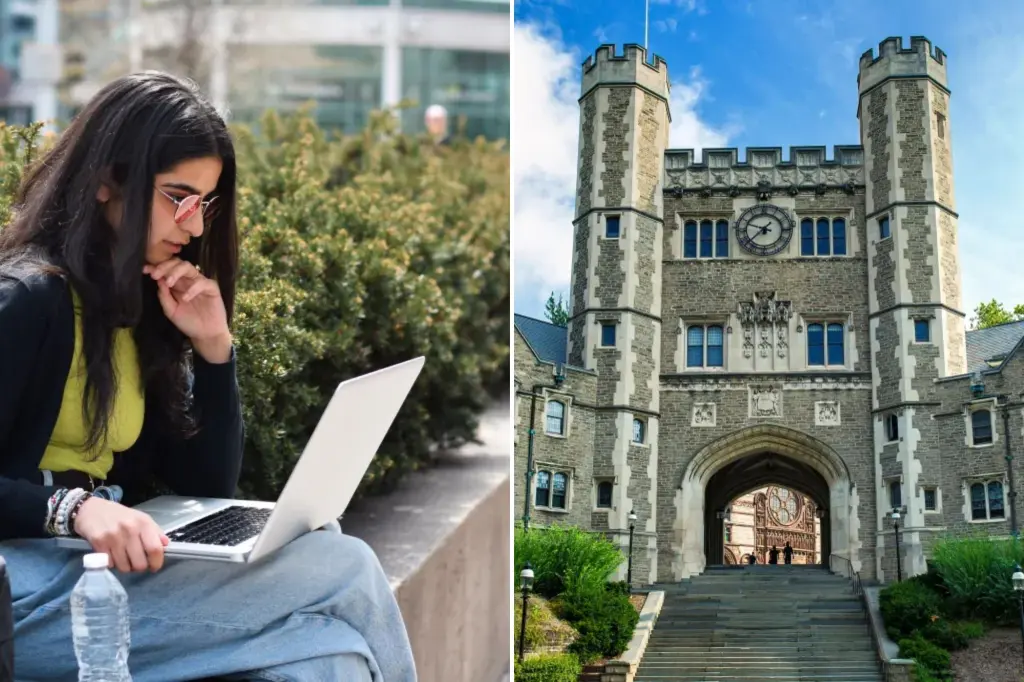
An unspoken set of rules have always governed the college admissions process for many Asian families.
They understand, for example, that an Indian male applying to study computer science or a Chinese female pianist will have to work exponentially harder to distinguish themselves in the admissions process. For South Asian families in particular, the college admissions landscape has become murkier than ever, leaving parents and students unsure of how best to differentiate themselves.
It’s been two years since the Supreme Court struck down affirmative action, reshaping the college admissions landscape and, thus, the strategies students must use to stand out to their dream school.
Though many assumed that the end of affirmative action would be a guaranteed boon for Asian applicants, recent admissions cycles indicate that it’s not quite so simple: While the Asian student population in the Class of 2028 increased at Columbia, it declined at Yale and Princeton.
South Asian applicants face more unique challenges in the admissions process than other Asian demographics. One study found that applicants of South Asian descent were 49% less likely to earn admission to an Ivy League+ school than their white counterparts with similar academic and extracurricular qualifications.
Though often grouped together, this rate is significantly lower than that of their Asian American peers, who are 28% less likely to be admitted over white applicants with similar profiles.
This is largely due to the lower rates of legacy status amongst applicants of South Asian descent, as white students are six times as likely to be legacy applicants. While the end of affirmative action ended the explicit consideration of race in the college admissions process, it can do little to prevent implicit bias, which strongly impacts applicants of Asian and South Asian descent.
Now, faced with these significant challenges and without race-conscious admissions, many South Asian-
American parents are left wondering: Will my child’s hard work finally be evaluated on merit? How can they stand out even without the benefit of legacy status? And how can they strategically build their profile in this new era of race-blind admissions?
As the CEO of Command Education, a New York-based college consulting firm, I advise families like these as they navigate the complex and hyper-competitive admissions landscape. My advice to them is the same: Ultimately, it’s not the fixed points on your child’s application that will earn them admission to a top school — it’s how they connect the dots for admissions officers.
Hundreds of other applicants might list similar extracurriculars, top grades, challenging coursework, and competitive summer programs. Thoughtful strategy and intentional storytelling are essential for ensuring that their application doesn’t fade into the crowd.
“The personal statement is one of the most critical opportunities for South Asian students to leverage storytelling to break through stereotypes,” says Grace Lee, Managing Director at Command Education. “Every admissions cycle, we empower applicants worried that their activities and interests will put them in a box to demonstrate their authentic passions and showcase a totally unique perspective through their writing. Students should start by asking themselves: What is a story that only I can tell?”
Students should strategically showcase elements of their background, interests, experiences and values in their writing so that their interests are contextualized within an eye-catching narrative framework.
A student may be one of many applicants of Nepalese descent pursuing a pre-med track, but they can ground that interest in their unique story — by sharing, say, how their experience traveling to Nepal over the summer to visit family shaped their future goals of bringing medical supplies and culturally informed care to rural areas.
Likewise, a student may be one of many Indian applicants applying as an engineering major, but writing about how their relationship with a grandparent inspired their passion project developing accessible, voice-activated tools for those with limited mobility can add depth and dimension to their application.
The more that students can think outside of the box and highlight their truly idiosyncratic qualities through both the content and style of their essay, the more likely they are to catch admissions officers’ eyes.
The work of crafting a unique application starts long before students begin writing their essays. Students can make strategic moves early in their high school career to ensure that their profile stands out from the rest.
Most students are keenly aware that they need to earn top grades in the most challenging classes related to their future college major. However, the Ivy League and other top schools have a curricular focus in the liberal arts and value interdisciplinary learners, which means that it is imperative that applicants show academic prowess across all subjects, even those outside of their field of interest.
This kind of interdisciplinary exploration can also go a long way in distinguishing a student from others who share their interests.
One student began working with me as a typical computer science applicant, but I advised them to embrace their secondary interest in international relations and find creative intersections between the two disciplines. Beyond the standard robotics competitions, coding clubs and Technology Student Association, this student established a unique passion project that combined technology and geopolitics: a blog and social media platform tracking and analyzing misinformation campaigns online during foreign elections.
It was this unique approach to putting their academic interests into action — in a dynamic and innovative way — that ultimately earned them an acceptance letter from their dream school.
Another student I mentored was interested in engineering and had participated in the stage crew for a series of high-school drama productions. They saw their participation as a way to blow off steam outside of the classroom, but I encouraged them to view it as an opportunity to carve out a niche for themselves within the broad field of engineering.
They took on a greater role in the production crew, experimenting with design solutions to overcome acoustic challenges in the outdated theater building. This involvement inspired a passion for creating design solutions in the performing arts and led them to pursue a degree in Mechanical Engineering with minors in Sound Production and Theater.
Given the unique challenges they face in the admissions process, many South Asian families assume that their child needs to “do it all” in order to earn an Ivy League acceptance—but this simply isn’t true.
The key to standing out is in clear and intentional storytelling throughout all of a student’s application materials. Breaking down stereotypes and articulating their original perspective requires students to get creative and strategize the overall narrative they want to convey.
In the post-affirmative action admissions landscape, success is no longer about checking the right boxes; it’s about telling a story admissions officers won’t forget.
Christopher Rim is the CEO of Command Education, an education partner of the New York Post.



